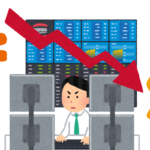
Ryugasaki City, where we currently live, and Pinamungajan, where my wife is from. Both are rural. Even so, I thought that Ryugasaki City was by far the larger city when compared in terms of size.
After all, Ryugasaki is a "city" and Pinamungajan is a town, not a city. Incidentally, in the Philippines, a city becomes a municipality when its two-year revenue exceeds 100 million pesos and its population exceeds 150,000.
In the Philippines, if there is a Jollibee, it can be considered a city there, but Pinamungajan has neither a Jollibee nor a shopping mall like Gaisano or Metro. According to my recollection, there were no buildings with more than 4 stories.
There is a bus terminal and a market around the town hall, but it is not what you would call a downtown area.
Surprisingly, however, the population was almost the same, 75,000. Moreover, the city of Ryugasaki increased to 80,000 in 2015, but has been declining since then. Pinamungajan, on the other hand, has increased by 18,000 people over the past 10 years.
Incidentally, Toledo, its neighbor to the north, has a population of 200,000, making it a core city in Japan. In Ibaraki Prefecture, it has the same population as Tsukuba City, so it has two shopping malls. Of course, there is a McDonald's as well as a Jollibee.
Although the population of Pinamungajan has grown rapidly, I do not think that the population will grow much in the future. This is not only because there is not enough industry to support the population, but also because the birth rate in the Philippines is declining.
Personally, I would like the town to remain quiet as it is now. However, I would like the roads to be improved so that I can get to Cebu City in about an hour.









